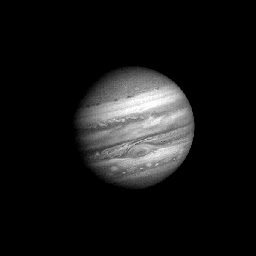Jupiter, we are coming for you. On Wednesday, NASA’s Juno spacecraft successfully performed a manoeuvre that adjusted it’s flight path for its encounter with Jupiter.

READ MORE: NASA’s Juno probe is making history
The Juno mission is hot on the heels of NASA’s extremely successful New Horizons mission to Pluto.
Jupiter is the mightiest of planets: 1,000 Earths could fit inside it. And, while the sun accounts for 99 per cent of the mass in our solar system, Jupiter and Saturn account for 90 per cent of the remainder.
The last NASA mission to Jupiter was Galileo which was launched in 1989. The mission ended in 2003, when scientists plunged the spacecraft into Jupiter’s atmosphere. Before Galileo, Voyager 2 flew by in July 1979, just a few months after Voyager 1 did its flyby.
So why another mission to Jupiter?
Planetary scientists are anxious to discover more about Jupiter, including how it formed. In order to shed light on this mystery, Juno will orbit the gas giant, equipped with the most recent technology. It will investigate how much water is in its atmosphere and measure the composition, temperature and motions of the clouds. Aside from its stunning, swirling clouds, the planet is home to the Great Red Spot, a swirling storm that has been observed for more than 500 years.

As well, Jupiter — like Earth — experiences aurora, like our northern lights. In order to better understand this process, the science teams will also explore the planet’s magnetic field (since that is what interacts with solar particles, producing aurora).
Some have called Jupiter a “failed star,” but that’s not quite correct. While it is comprised mostly of helium and hydrogen gases — which make up stars — it doesn’t have the mass that allowed it to begin fusion and ignite as a star. It would have to be 80 times more massive.
Juno is on its way to Jupiter, travelling at roughly 25 km/s. It’s scheduled to arrive on July 4 at 11:18 p.m. ET.



Comments